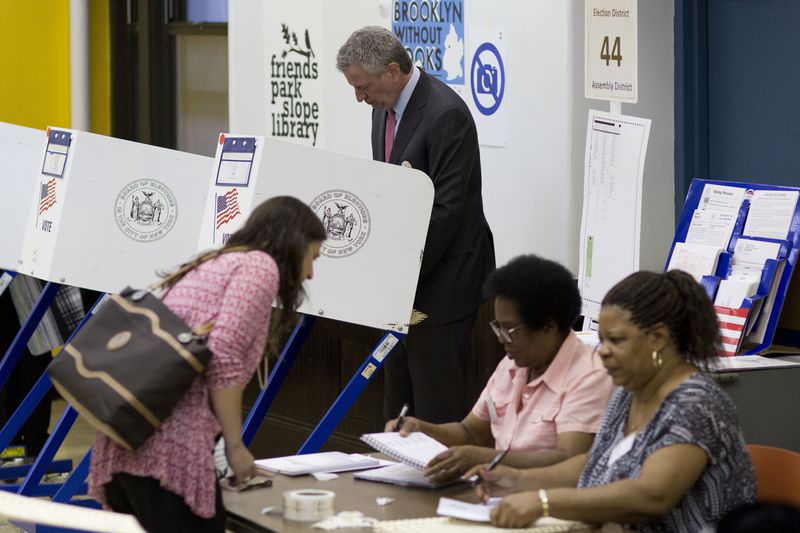Original Article: https://www.nydailynews.com/opinion/ny-oped-new-yorkers-polls-20210202-otfnfd5kr5gvfddjvqyqcuvqoa-story.html
By Dennis M. Walcott
New York City is voting again. A little more than a month after 3 million New Yorkers turned out for November’s presidential election, a much smaller group in the North Bronx — about 7,000 voters — went to the polls to decide who would fill the area’s vacated City Council seat.

That Dec. 23 vote, though little-noticed during the holidays, launched New York City’s 2021 election season. Tuesday, the road runs through eastern Queens, where a similar race puts ranked choice voting to the test for the first time. The new system will allow city voters to rank up to five candidates by preference rather than choosing just one. If no candidate wins a majority, the one who performed worst is eliminated, and the votes they received are redistributed to their supporters’ second choices.
In other words, if your favorite comes in last but you listed others, your vote still counts.
It may seem confusing at first glance. (Truth be told, plenty of voters have been confused by traditional ballots — making them more accessible was already a core concern when I served on Mayor Dinkins’ Voter Assistance Commission in the early 90s.) But if there is no consensus yet about how it will affect the election, many agree that it will deter negative campaigning and limit the influence of more extreme candidates, who have sometimes swayed the city’s low-turnout primaries.
More importantly, the measure was backed by 73% of New Yorkers in November 2019 voting.
Indeed, Democratic primaries have been both so decisive and vulnerable to small factions that some right-of-center city voters believe they will have more influence if they register as Democrats.
Conversations about these changes called to mind my first vote 50 years ago. I grew up in St. Albans, a mostly Black Queens community where neighbors marched for civil rights and voting was prized and expected. A few months after 18-year-olds first became eligible, I excitedly entered a voting booth and cast a ballot in the 1970 governor’s race.
I later learned the story of Rev. George W. Lee, one of the first Black men registered to vote in his small Mississippi county since Reconstruction. During the early 1950s, he reportedly helped register 92 local Black residents.
When authorities offered protection from racist death threats in exchange for quitting his voter drive, he declined. He was assassinated not long after. (Three months later, Emmett Till was lynched in the next county.)
The cost paid by Lee and many, many others has made voting an almost sacred duty for me, which means I respect most of those who make personal sacrifices to run for office.
This year, the city’s catastrophic challenges ought to produce an urgency and civic energy similar to that we saw in the presidential election and a high turnout in November. To that end, corporate leaders across the city have been emailing employees urging them to vote this year in an effort coordinated by the business-oriented Partnership for New York City.
But if past behavior is the best predictor of future behavior, hoping for a big electoral shift can be a challenge. Consider two unwelcome city traditions.
Number one: chronic voter indifference. Roughly 300,000 more New Yorkers participated in the 2020 presidential election, a two-point bump up from 2016, some of it due to increased registration. But the following month’s North Bronx results more accurately reflect New Yorkers’ lack of interest in local races. A Democrat aide named Kevin Riley drew 68% of the vote — which amounted to fewer than 5,000 votes, just 7.5% of those eligible.
The pattern holds true in mayoral elections. In the 2017 race, only 12% of voters cast ballots in the primaries and just 26% voted in the general election.
Problem number two: New Yorkers’ nearly genetic dissatisfaction with their voting options.
The fact that many people are running for mayor at present seems to affront some observers, as if a crowded field cheapens the race. In December, one columnist lamented “a Democratic field filled with out-of-sync, out-of-tune candidates humming Leonard Cohen’s ‘One Of Us Cannot Be Wrong.’ ” One commentator suggested the city habitually lacks an “abundance of quality” in its candidates. Another called them “the least and lightest.”
The media doesn’t have a responsibility to be friendly. But come on, people — it’s early February! Give candidates a chance to become bad.
Turning out a large voting public isn’t the work of a day. But drawing attention to the problem, in a concerted way, will improve the city’s political environment. And the best solutions fail without broad support or respect for those willing to be accountable for the results.
In a city under stress, at a time of mounting loss, your vote can help make the center hold.
Categorised in: Politics
